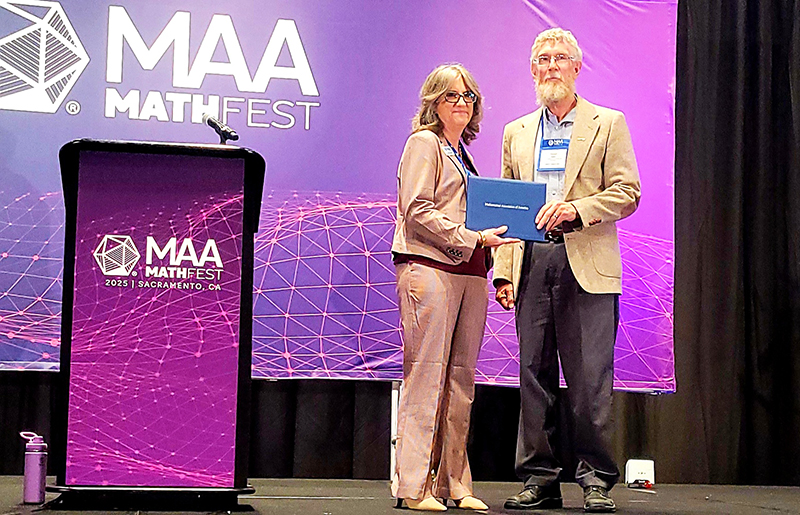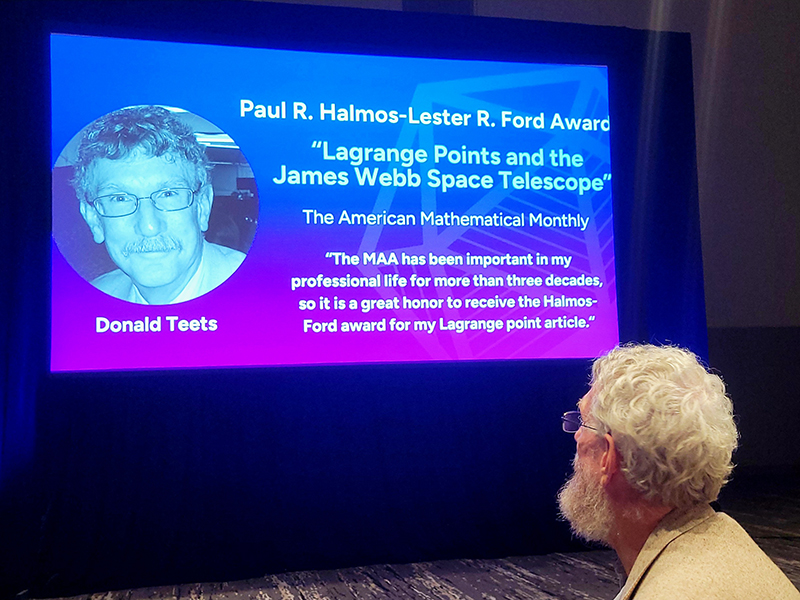The Intersection of Math, History and Astronomy: Mines Emeritus Professor Awarded Prestigious Mathematics Honor

When South Dakota Mines Professor Emeritus Donald Teets, D.A., set out to understand contradictory claims in two calculus textbooks 30 years ago, he didn’t expect it to launch a new chapter in his career.
His deep dive into the history of mathematics and astronomy has now earned him one of the field's highest honors, the Paul R. Halmos – Lester R. Ford Award from the Mathematical Association of America (MAA), for his paper “Lagrange Points and the James Webb Space Telescope” published in The American Mathematical Monthly.
In the mid-1990s, Teets discovered two conflicting accounts of a method being presented in calculus textbooks. One textbook attributed the method to German mathematician Carl Friedrich Gauss, the other claimed it was French mathematician Adrien-Marie Legendre.
“I got so curious about which one was true,” he said. “I decided to go right to the sources. I found a letter that Gauss had written in 1802 in German.”
With the help of Karen Whitehead, Ph.D., Mines provost and vice president of academic affairs from 1997 to 2009, whose bachelor’s degree was in German, he worked to understand the letter, which was related to the orbit of the asteroid Ceres.
“That’s what got me started in this. I had such success with that so I began to explore
these historical connections with the mathematics I was teaching in class,” said Teets,
who taught at Mines from 1988 to 2023. “Since then, I have pursued a number of these
studies that focus on the intersection of mathematics, history and astronomy.”
His paper with Whitehead not only earned him the MAA Allendoerfer Award in 2000 but fueled his decades-long interest in the subject. “It opened the door to nearly three decades of very rewarding, very fruitful study within the intersection of mathematics, history and astronomy,” he said. “If you look at the most famous names in mathematics, especially in the 18th and 19th centuries, almost all of them were doing something with astronomy.” He has studied the original writings of Johannes Kepler, Sir Isaac Newton, Pierre-Simon Laplace, Joseph-Louis Lagrange, Gauss, Friedrich Wilhelm Bessel and others.
When Teets discovered that the James Webb Space Telescope, the largest, most powerful and complex telescope ever launched, travels near one of the five equilibrium points first identified by Lagrange, he was intrigued and needed to learn more. These positions, known as Lagrange points, are locations in the Sun-Earth system where a small object, such as the Webb Telescope, can maintain a small “halo” orbit.
“I was immediately drawn to the idea that there was no better way to learn about Lagrange points than to read Lagrange’s original work,” he said. “The whole theory that makes the James Webb mission what it is was done in 1772. What I find fascinating is that stuff that is relevant today was first done centuries ago.”
Despite having had several articles published, his “Lagrange Points and the James Webb Space Telescope” was the first to appear in The American Mathematical Monthly.
“I thought it was an extraordinary honor just to get published in the journal, and then to receive an award was nothing short of spectacular,” Teets said.
Despite being “retired”, Teets has a follow-up paper to his recent award-winning one and is currently writing another.
He is also an avid bike rider, covering 2,000 miles on the George S. Mickelson Trail every year for the last several years.
Aside from Teets and Whitehead, Travis Kowalski, Ph.D., Mines department head and professor of mathematics, has earned two MAA honors, the George Pólya Award and the Chauvenet Prize.